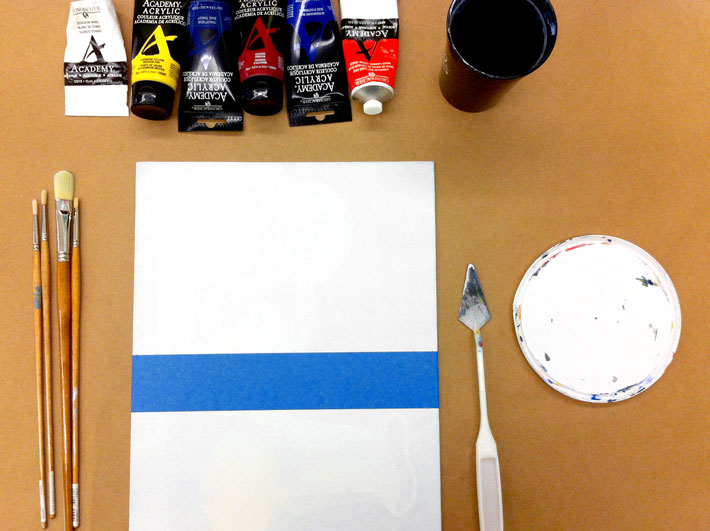Blog
Painting aftermath

I wanted to show you all what my set up looks like after I finish painting. These pictures were from an acrylic painting class I taught. I don’t use anything too fancy. I think that’s a leftover from college. I don’t have a lot of space to work in (my “studio” is my bedroom) and an equally small budget. So I use what I can.
The before:

I lay out all of my supplies at the beginning. I have my canvas, brushes, palette, paint, water container, paper towels (not pictured). I work with canvas boards or flat substrates a lot. Again, I think that’s from college. They are a bit more convenient than stretched canvas. I don’t have a lot of space and canvas boards are more stackable.
For the class I teach the company provides the supplies. I have to use Grumbacher paints and brushes. But I’ve never had much of a preference in regards to brushes. Filberts are nice for versatility. As far as paint the most experience I have is with Utrecht artist’s paints. And the paint pictured above has been good so far.
The palette:
I mix my paint on this plastic lid. We used to buy margarine in those large plastic tubs and kept them to use for leftovers. This lid is probably from one of those. What I like about it is once the paint dries you can peel it off and have a fresh surface again.
Sometimes I’ll use a disposable palette pad. It’s like a pad of waxed paper. You can tear off each sheet once you’re done painting. For my budget and needs it’s not the best item. It’s not reusable like the plastic lid.
You can also use actual painting palettes. They come in wood, glass, or plastic. There’s also the Masterson Sta-Wet palette. That keeps your acrylic paints wet and usable for a long time. But I don’t paint often enough to get the benefit of this though.
The after:

I’m not a particularly messy painter. A lot of people have commented on that. At the end of class they’re covered in paint and I might have a splotch or two on my fingertips. This might be because I’ve only ever painted in places where I can’t be too messy (my room, dorm room, class rooms).
Once I’m done painting I let the canvas dry before moving it around. Acrylic dries quickly so that doesn’t take long. I pack up my supplies, let the paint dry on the palette so I can peel it off later, and rinse out my water container. Then I move on to cleaning my brushes.
The cleanup:
Once I’m done painting I try to clean my brushes as soon as possible. Since I work with acrylics they dry very quickly. It’s a pain in the butt to get dried acrylic paint out of a brush. (It’s possible, you just need the right product.) I also rinse and wipe off the brushes throughout the painting session.
I use The Master’s Brush Cleaner and Preserver. It’s a hard soap that you swirl the brush through. It suds up and you work the soap through the bristles until it rinses away clean. Re-shape the brushes then let them air dry on a flat surface (with the bristles hanging over the edge so they shape doesn’t get messed up).
You can also use regular hand soap or dish soap. Just make sure you DO clean your brushes. It’ll help them last longer and keep them in better condition.
So that’s just a peek into my acrylic painting process. My watercolor painting process is similar although the materials change. Check out some of my illustration work in the portfolio.


